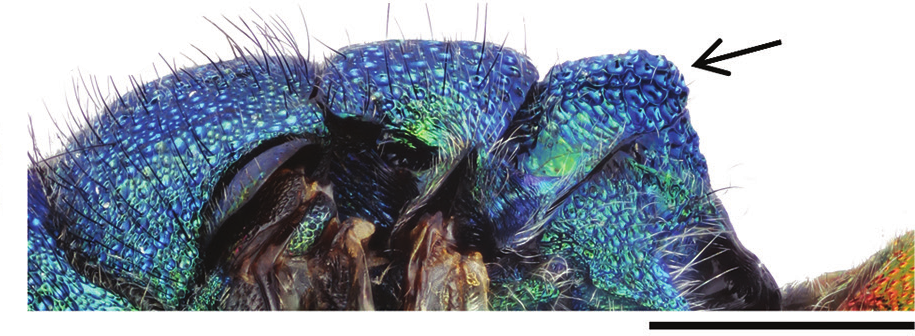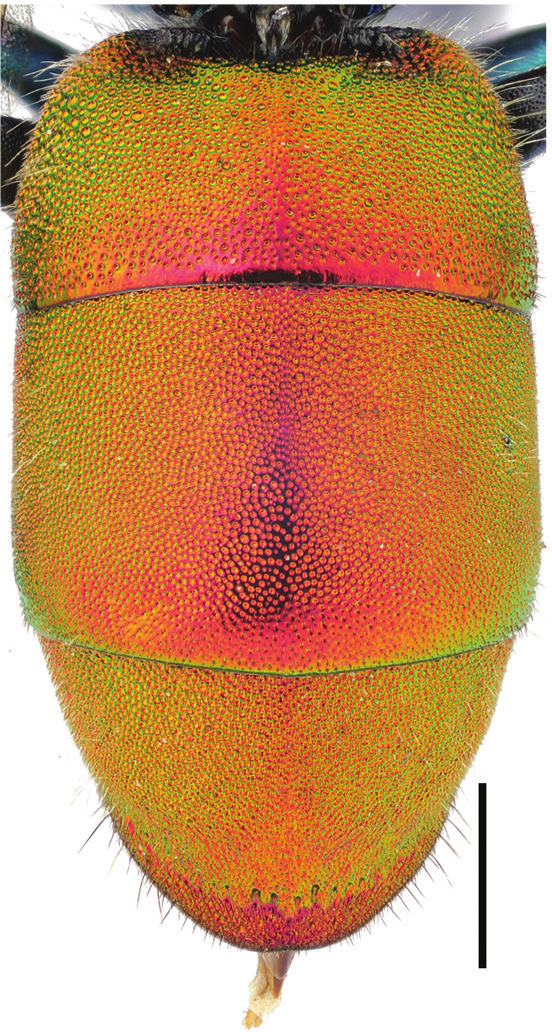Chrysura trimaculata
- Innhold
- Diagnosis
- Distribution
- Biology
Diagnosis
Figure 205
Mesoscutum, mesoscutellum, metanotum and propodeum, lateral view (arrow indicating metascutellum): C. trimaculata ♀. Scale 1 mm.
Figure 206
Metasoma, dorsal view: C. trimaculata ♀. Scale 1 mm.
Length 9–11 mm.
Compared to other similarly coloured species of Chrysura, the metascutellum is more sharply elevated (Fig. 205) and T3 of the female is longer and more ovoid in shape (Fig. 206). Punctation of the tergites is very dense and homogeneous (Fig. 206). The black spots on S2 are very large, and the eyes are strongly bulging above genae. The head and mesosoma are dark green or green-blue and the metasoma is golden red.
Distribution
Sweden. Rare. Only found on the islands of Öland and Gotland.
West Palearctic: southern and central Europe, Asia Minor (Linsenmaier 1997).
Be aware that the records present in the GBIF map may be misleading for some countries due to unrevised data sets or missing information.
GBIF Taxon: Chrysura trimaculata (Förster, 1853)Biology
Habitat: sparsely vegetated sandy areas. Adults occasionally visit flowers of Apiaceae, Asteraceae, Euphorbiaceae, Rosaceae and Salicaceae (Kusdas 1956, Ressl 1966).
Flight period: from April to June.
Host: species of Osmia Panzer (Megachilidae) which construct nests in empty shells of larger terrestrial gastropods. In Sweden, the main hosts are probably O. bicolor (Schranck) and O. aurulenta (Panzer), possibly also O. spinulosa (Kirby) (Trautmann 1927, Berland and Bernard 1938, Heinrich 1964, Sörensson 2008).

